Lani’s Big Year: the big push
Note: This is the seventh in a series of occasional blog posts by GGBA member George Peyton about his other half Lani Rumbaoa’s effort to see over 600 bird species in the Lower 48 states in 2015.
By George Peyton
In planning Lani’s Big Year, it became evident that a key to reaching her goal was making the absolute maximum use of spring. During spring, birds are in bright plumage, often singing so they are more easily located, and sometimes concentrated in relatively small areas along migratory pathways such as High Island, Texas, or Magee Marsh, Ohio.
Out of this developed a solid four-week trip to ten states, from Maine to Mississippi to Minnesota, with Massachusetts, New Hampshire, Ohio, Michigan, New Jersey, Tennessee, and North Dakota thrown in — an all-out effort to hit as many key bird locations as possible before the crucial spring birding period faded into the much duller and slower Summer.
I realized that birding all-out day after day for four weeks would be totally exhausting, so I included a large Peyton Family Reunion in Mississippi, followed by a long weekend at my 55th Reunion at Princeton, both of which did wonders in giving us a breaks from the 12+ hours of birding each day.
We started on May 11, flying to Detroit and then driving down to the Toledo, Ohio, area, in order to be reasonably close to Magee Marsh, a legendary “Migrant Trap” where the “Biggest Week of Birding” was drawing thousands of birders from around the U.S. and the world. When I first went to Magee Marsh four years ago, I simply could not believe it. In my 66 years of birding, this was the most amazing place to bird in the United States that I had ever been.
Picture this: A half-mile-long five-foot-wide boardwalk going through a wooded swamp 250 yards from the shore of Lake Erie, with at any given time between 350 and 1,000+ birders on that boardwalk.
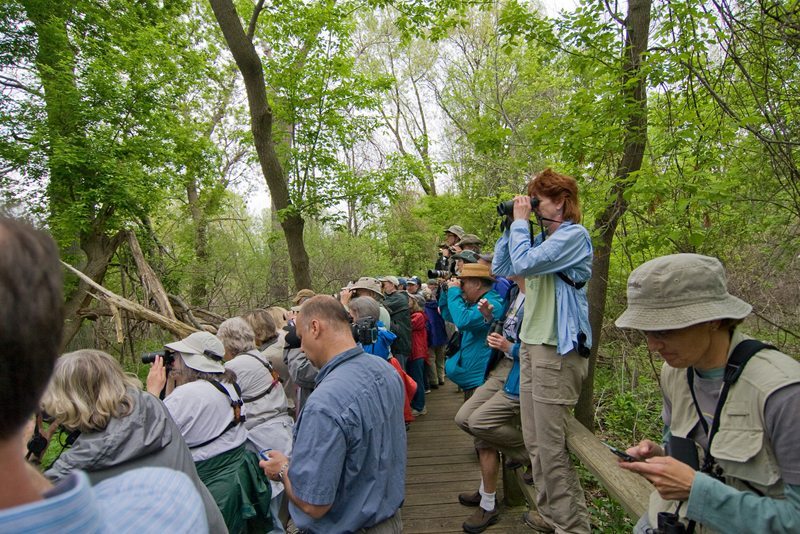
It sounds insane, and it is! Sometimes you have to be a blocking back pushing through the crowds of birders and forests of scopes and gigantic Bazooka-looking cameras on tripods — mostly Canons — pointed in every direction. Why in the world would any mentally competent birder ever endure this mass of humanity and constant traffic jam?
The answer is the amazing variety of birds, particularly warblers, often very close, often at eye level, not infrequently singing their hearts out, and for the most part totally oblivious to all of the crazy birders nearby. Magee Marsh sits right at the center of an important migratory pathway headed north to Canada, with the equally famous Point Pelee to the north, jutting out into Lake Erie.
Birds migrating north for hundreds of miles suddenly encounter strong cold winds blowing south when they reach Lake Erie. Often exhausted and hungry, they drop out of the sky into the closest trees – those in Magee Marsh. These migrants are often so tired and starved that they totally ignore the birders on the Boardwalk, In my two visits to Magee Marsh, I have had numerous encounters with birds, often warblers, in absolutely gorgeous spring plumage, often within five to seven feet and at eye level, sometimes so close that I could touch them. Invariably they were oblivious to the masses of birders nearby.
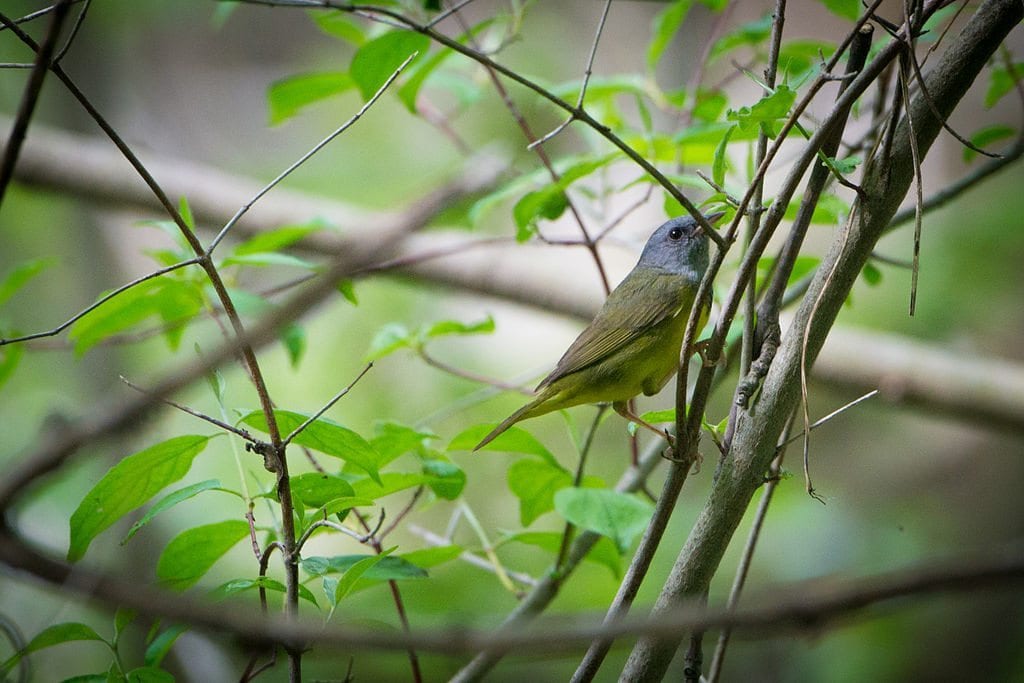
Around 230 species are usually recorded at Magee Marsh and the immediately adjacent Ottawa National Wildlife Refuge during the Biggest Week of Birding. This is a major reason that Kenn Kaufman, a justly famouse bird guru who is author of Kingbird Highway and many bird and nature guides, chose to move from Tucson to the Magee Marsh area. (Another reason is that Kenn’s wife Kimberly Kaufman is Executive Director of the Black Swamp Bird Observatory, which studies birds in the Magee Marsh area.)
Another advantage of visiting Magee Marsh during the Biggest Week Of Birding is running into good birding friends. This time they included Golden Gate Bird Alliance members Dr. Michael Reyes, John Poole, Pat Doughty, and Valerie and John Matzger. We also met Bill Creasey, the Chief Naturalist at the Cincinnati Nature Center, with whom I roomed with on a birding trip in India, and James and Monroe McKay, with whom Lani has been competing for highest Big Year count since we originally met them on the Colorado Chicken Tour in April.
Another plus was meeting Greg Miller, one of the three actual participants in the famous 1998 Big Year on which the “Big Year” book and movie were based. He turned out to be an excellent birder and a charming personality.

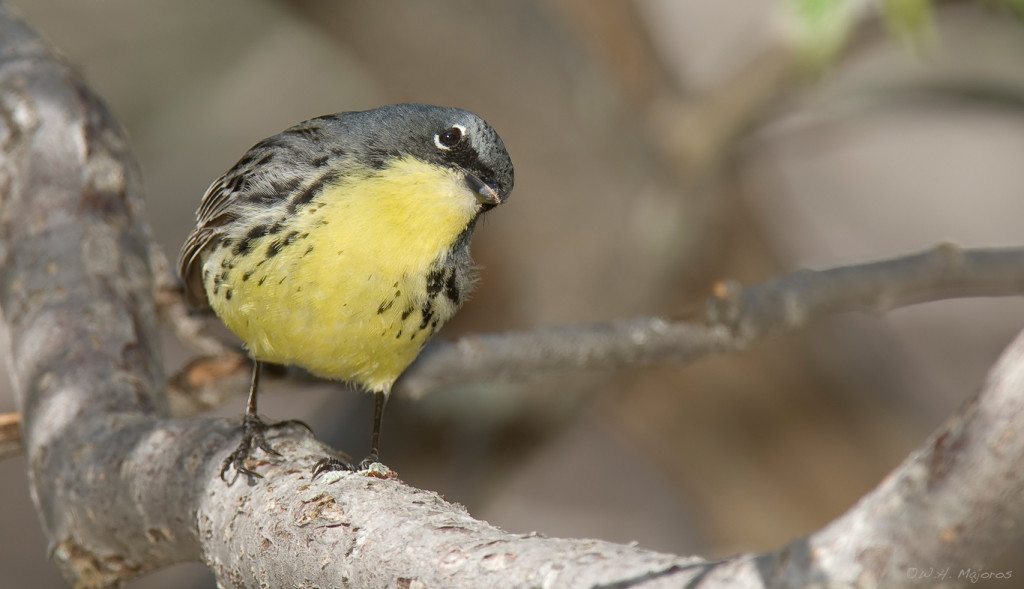
After birding for 3 ½ days around Magee Marsh, Lani had picked up some key target species, including Trumpeter Swan, American Woodcock, and Mourning Warbler,so we then headed up to Grayling, Michigan, where the next morning we joined a 7 a.m. bird hike sponsored by Michigan Audubon Society to see the relatively rare Kirtland’s Warbler. Then we drove for some hours back to the Detroit Airport to take an evening flight to Boston, where we finally arrived at our Airport Hotel at 11 p.m.
The next morning we arose early for a 7 a.m. pickup by Bob Stymeist, the excellent Boston birder who had taken Lani and me out in the greater Boston area in January. Bob brought along his house guest Ann Dewart, a GGBA member recently arrived from Oakland, who added her superior birding abilities to our group.
Bob started by showing Lani a Saltmarsh Sparrow. Then we were off to Revere Beach, where after some effort he located Manx Shearwaters (which come to that area from April through July, though their nests have never been located), then not far away a difficult-to-find Little Gull (just located the day before as part of the Massachusetts Audubon Birdathon).
We moved on to Plum Island, where Lani added Bobolink and ran into Sandy Komito of Big Year fame once again after first visiting with him at High Island, Texas. He gave Lani a big hug and wished her well.
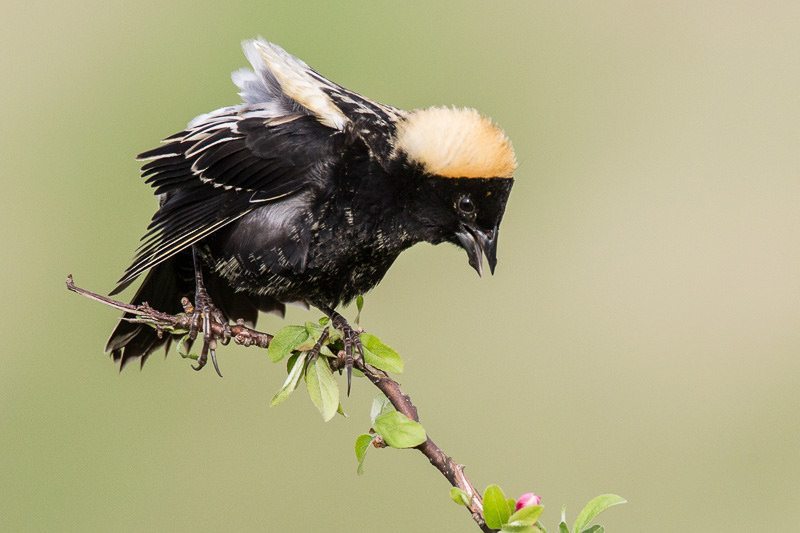
We ended our birding day at Great Meadow, where Bob located a breeding Swamp Sparrow for Lani, and where we encountered Peter Alden, author of the National Audubon Field Guide Series on different regions of the country, leading a local bird group. We were fortunate to be invited by Bob Stymeist to his home for a delicious dinner prepared by his wife, where we found even more bird paintings, carvings, and other bird art than we have in our Berkeley home.
We left early the next morning for Maine, where after a long drive and a stop at the L.L. Bean complex of stores in Freeport, we spent the night in New Harbor in the charming Bradley Inn, where Lani and I were treated to the best California Cuisine dinner we had ever tasted, accompanied by excellent wines.
The next morning we arrived before 7 a.m. at the dock for boats going out to the Hog Island Audubon Camp. Eric Snyder expertly navigated our small boat out to Eastern Egg Rock, where the iconic Atlantic Puffin has been restored to a successful breeding population through Project Puffin, led by Dr. Stephen Kress. Lani added not only Atlantic Puffin but Arctic and Roseate Terns to her Big Year List. There were also Black Guillemots, a Razorbill, and quite a few Purple Sandpipers, with great views of all of those species. All in all, a very special experience!
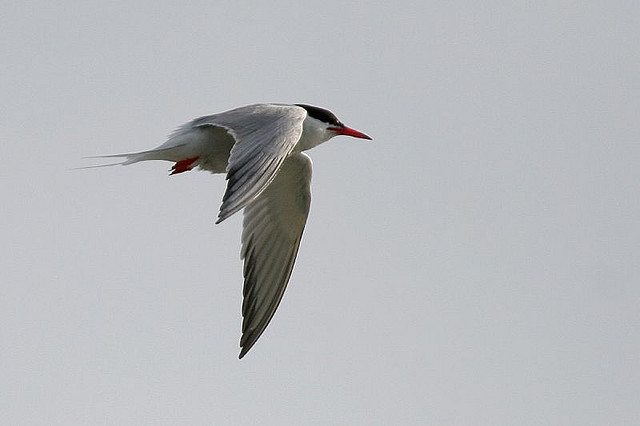
After a break for those family and college reunions, we flew to Minneapolis to start a week birding in Minnesota and North Dakota. We headed north from Minneapolis for over three hours, where we were met by our guide Chris West, who promptly took us out that evening to try to locate a Yellow Rail, which normally does not call until it is dark. We did locate a Yellow Rail calling loudly about 30 feet away, but unfortunately it never would show itself.
The next morning we were out early, birding various locations, particularly around the famous Sax-Zim Bog in the Greater Duluth Area, where we found some really important species for Lani’s Big Year, including Connecticut Warbler, Ruffed Grouse, Sedge Wren, and LeConte’s Sparrow. The following day Lani added Boreal Chickadee and Black-backed Woodpecker. Adding a special thrill and a Life bird for Lani, she got a good view of a Great Gray Owl on our third day with Chris West, very hard to locate in the spring and summer in Minnesota.

Then we drove 12+ hours to far western North Dakota near the Montana border, where we were given directions by Kim Risen, a well-known Minnesota bird guide, to a somewhat remote location to seek a very difficult-to-find Baird’s Sparrow. Our first effort driving on dirt roads through the Little Missouri Grasslands, dotted with Bakken Shale oil wells and storage tanks, came up empty. So the next morning we rose very early and arrived at the remote site not long after dawn. Lani’s sharp eyes and hearing located two separate Baird’s Sparrows within five minutes, singing on grass stalks over 75 yards away. Then to our amazement a Baird’s Sparrow flew to a barbed wire fence near us, dropped to the road 30 feet away, and ate grit for about half a minute — giving us a great view before it disappeared into the roadside grass. It made the 12+ hour drive worth the effort.
We did not look forward to the long drive back to Minneapolis, but Lani was not finished with that area yet. There was one more important bird to find, Henslow’s Sparrow. After we finally reached Minneapolis, we headed out in the late afternoon to a regional park on the south side of town and set out across meadows surrounded by woods. It was perfect habitat and we stopped periodically to listen for the Henslow’s song, but after 40 minutes we had no luck and headed back.
Suddenly, Lani’s great hearing picked up a Henslow’s song! After a few minutes she located it singing, about eight inches off the ground 80 yards away. Fortunately I had brought my scope, so we had good views for over five minutes. We made it back to the car just in time to avoid being caught in a violent thunderstorm.

Henslow’s Sparrow was No. 510 for Lani’s Big Year List, a fitting way to end our four-week birding trip. We were both happy but exhausted when we finally landed in San Francisco.
While Lani was getting closer to her goal of seeing at least 600 bird species in the Lower 48 States during 2015. we both knew that finding those last 90 species was going to be increasingly difficult. Her goal is so close, yet so far away! Stay tuned.
P.S. Since she returned on June 8 from Minneapolis, Lani has birded regularly here in California, including almost a week in the Sierras. Due to her hard work in both California and Southeast Arizona this summer, Lani is now up to an amazing 585 species on her Big Year List. An account of our very productive two weeks in Arizona is coming up next.
————————————-
George Peyton practiced law for 44 years, dividing his time between a private practice and work as Piedmont City Attorney. He has served on the boards of Golden Gate Bird Alliance, Point Blue (formerly PRBO), Audubon Canyon Ranch, and National Audubon. He played a leading role in National Audubon’s work to save Mono Lake. He has been an active birder for 66 years and seen about 6,500 bird species. Click here to read his previous posts on Lani’s Big Year.
